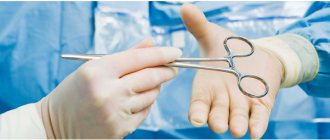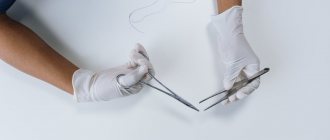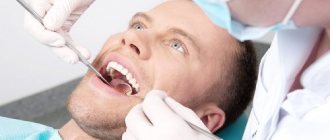There are various plastic surgeries in the facial area that can restore an elastic, toned, fresh look, give youth and restore beauty. Depending on the type and complexity of the operation, the duration and features of recovery differ. Some corrections are quite complex and require a long rehabilitation period. Others allow you to return to normal life in the near future after the intervention.
But regardless of the type, complexity and volume of the operation, almost any intervention, like other surgical procedures, is accompanied by the appearance of edema during the recovery period. This is a natural reaction of the body and an inevitable part of the rehabilitation process. Following your doctor’s recommendations will help speed up the decline of swelling and allow you to recover as quickly as possible.
About lymphedema
Lymphedema is a swelling condition that can develop in the legs after lymph nodes are removed or injured. Lymph nodes are small, bean-shaped structures that are located throughout the body. They drain fluid away from different areas of your body. The inability to drain fluid leads to tissue swelling.
During surgery, lymph nodes in your pelvis were removed to get rid of any remaining cancer cells. This increases the risk of developing leg lymphedema. The risk will be higher if you have had radiation therapy or had lymph nodes removed in your groin. If you only have lymph nodes in your pelvis removed, you may be less likely to develop leg lymphedema.
Lymphedema may develop immediately after surgery or years later.
to come back to the beginning
Risk factors for developing leg lymphedema
Risk factors for developing leg lymphedema include:
- weight gain or excess weight;
- infection of the affected leg;
- radiotherapy of the pelvic area;
- reappearance of cancer.
There are other factors that are thought to increase this risk. These include:
- Sedentary lifestyle.
- Flying on an airplane.
- Compression of the leg. It occurs when there is a tight ring of pressure in one area of the leg and is often caused by wearing certain clothing.
- Exposure to extreme temperatures.
to come back to the beginning
How to reduce your risk of developing lymphedema
It is impossible to predict which patients will develop lymphedema, but there are preventive measures to reduce the risk of its occurrence.
Protect your skin
One of the measures to reduce the risk of developing lymphedema is to protect the skin as much as possible from injury or infection. This is because the affected area begins to receive cells that fight the infection, which in turn causes swelling. Your legs may simply not be able to handle the removal of this extra fluid.
Treat cuts and scrapes
- Wash the area with soap and water.
- Apply first aid ointment to it.
- Place a clean, dry gauze pad or Band-Aid® over the top.
Treat burns
- Wrap an ice pack in a towel and apply to the burn for 15 minutes. You can also wash the burn with cold water.
- Wash the area with soap and water.
- Apply first aid ointment to it.
- Place a clean, dry gauze pad or bandage on top.
Watch for symptoms of infection, which include:
- redness;
- edema;
- heating of surrounding tissues;
- sensitivity.
Call your doctor or nurse if you have these symptoms.
Don't wear tight clothes
Avoid wearing tight clothing that leaves deep marks on your legs, such as socks or sweatpants with elastic cuffs. Wear loose-fitting clothing that does not leave marks on your legs.
Compression garments, which prevent severe swelling from occurring, work differently. It ensures uniform pressure on the leg and proper fluid flow through it. You can learn more about compression stockings in the Compression Stockings section of this resource.
Avoid exposure to extreme temperatures
Extreme heat and cold can cause fluid to accumulate in the leg and cause swelling. Avoid or reduce time in hot baths or saunas.
Be careful when flying by plane
If you are at risk for lymphedema, air travel is associated with certain negative factors, including:
- Cabin pressure. The pressure in the cabin of an airplane is usually slightly less than the pressure on the ground. This causes the skin to stretch and fluid to accumulate in the legs.
- Sitting motionless for long periods of time. If you don't move for a long period of time, fluid can accumulate in your legs.
- Lifting and carrying luggage can cause muscle strain.
- Dehydration (when your body does not get the amount of water it needs).
Here are some tips to help reduce your risk of developing lymphedema:
- Buy a seat with sufficient legroom, such as a seat at the front of the cabin.
- Ask for help to carry, lift or remove luggage that is too heavy for you.
- Stand up and walk up and down the airplane aisle if possible.
- While sitting, do simple exercises with your feet and ankles. Exercise throughout the flight will help restore circulation and movement of lymphatic fluid. You can try the following exercises: Point your toes towards the ceiling and then lower them towards the floor.
- Make circular movements with your feet in one direction and then in the other.
Other ways to reduce risk
- Do not give injections (shots) or acupuncture into your affected leg(s).
- Do not use sharp pedicure tools. Use cuticle remover cream and file your nails instead of trimming them.
- Moisturize your skin frequently to avoid flaking and cracking.
- Keep the area between your toes clean and dry to prevent infections.
- Don't go barefoot.
- Make sure your shoes fit your feet to avoid blisters.
- Make sure your toe rings or ankle bracelets fit loosely.
- Try to sit cross-legged as little as possible.
- Choose a sunscreen with an SPF of at least 30 to protect your skin from sunburn.
- Try not to gain weight, as excess weight is one of the risk factors for developing lymphedema. If you are overweight, try to lose weight.
- Limit your salt intake. Its use can lead to swelling, which will put excess strain on the lymphatic system.
to come back to the beginning
Therapeutic gymnastics and massage
The exercise therapy complex is selected individually for each patient by hospital specialists. The complexity of the exercises depends on the etiology of the edema, the severity of the operation, the condition and age of the patient. Upon discharge, the complex continues to be carried out at home. General rules:
- perform exercises at a slow and smooth pace;
- combine exercises with breathing exercises to avoid pulmonary edema;
- do gymnastics in the first days only on your back, and then while sitting in bed.
- Walk barefoot at home every day for 10-15 minutes, alternating with raising on your toes.
An addition to the treatment of edema is massage, which helps normalize blood circulation. Classic – improves lymph outflow, increases the drainage properties of intercellular tissue. Cold is carried out with ice cubes and medicinal herbal decoctions.
How to recognize the first signs of lymphedema
After surgery, swelling occurs at the incision site (surgical suture) in all patients. This is normal and will subside a few weeks after surgery.
Swelling caused by lymphedema usually occurs in the lower leg(s). If left untreated, it can spread throughout the leg and all the way to the torso. At first, this swelling may appear and disappear. It may decrease as you lift your leg higher than your chest.
Other early symptoms may include a feeling of heaviness in your leg(s) or a feeling that clothes, socks or shoes are pressing in on you.
to come back to the beginning
Rehabilitation after facial plastic surgery
Rehabilitation after a facelift (facelift), liposculpture and blepharoplasty is individual, but as practice shows, tissue restoration takes 2-3 weeks
.
During this period, bruises
and slight
swelling
, which increases
2-3 days
after surgery. Pain usually does not bother you and does not interrupt you from rest and daily activities; it can be reduced with the help of mild painkillers prescribed by your plastic surgeon. There is no need to worry about scars after a facelift and blepharoplasty - they are hidden in the natural folds of the skin or under the hair, and over time they will become invisible. If, during recovery after facial plastic surgery, a patient has an individual tendency towards hypertrophic, keloid, atrophic scars or the tissue healing process does not go entirely smoothly, cryodestruction of the scar, lipofilling or injection cosmetology comes to the rescue. Plastic surgeons at the Pirogov Clinic are always in touch with their patients. The key to successful recovery after facial plastic surgery is to follow all the doctor’s recommendations: for a while you need to give up warm baths, solariums, alcohol and smoking.
Other Lymphedema Treatments
There are other treatments for lymphedema. Talk to your doctor or lymphedema therapist about which ones are right for you.
Other treatments for lymphedema include:
- Treatment of scars. Scarring from surgery can make it difficult for your body to eliminate fluid. Scar treatments help soften the area around the scar and make it less tight. It will help drain fluid from your legs.
- Improved posture.
- Using kinesiology tape for athletes.
to come back to the beginning
When can injections be given?
PRP therapy (plasmolifting)
Skin restoration after plastic surgery on the face is facilitated by PRP therapy (plasmolifting)
.
Swiss plasma lifting RegenLab
is today considered the “gold standard” and one of the world leaders in injection cosmetology. Facelift (surgical facelift) eliminates deep wrinkles and ptosis of the face, but in itself it does not affect the quality of the skin. PRP therapy (plasmolifting) saturates the skin with platelets, triggering at the cellular level the processes necessary for rejuvenation from the inside (stimulates the synthesis of its own collagen, elastin, hyaluronic acid).
Do plasma lifting
it is possible already
3-4 weeks
after plastic surgery, sometimes earlier - it depends on the specifics of the surgical intervention, the recommendations of the plastic surgeon and cosmetologist.
PRP therapy
works well with facial lipofilling
, as platelet-rich plasma improves cell survival.
Make an appointment
To make an appointment with a lymphedema therapist, contact your healthcare provider. They will decide together which lymphedema therapy is right for you. Once your doctor has made a referral, you will be contacted to schedule an appointment. If you have any questions, call Rehabilitation Service at 212-639-7833.
Lymphedema therapy is provided at several Memorial Sloan Kettering locations. For more information, visit www.mskcc.org/cancer-care/diagnosis-treatment/symptom-management/rehabilitation/medicine-therapy.
To find a lymphedema therapist in your area, you can visit the following websites:
Klose Training
www.klosetraining.com
Norton School of Lymphatic Therapy
www.nortonschool.com
Academy of Lymphatic Studies
www.acols.com
Lymphatic Association of North America
www.clt-lana.org
to come back to the beginning
Relieving swelling during pregnancy
In the body of a woman carrying a fetus, the concentration of the hormone progesterone increases. It is one of the causes of edema during pregnancy. In no case should it be reduced, because it is this that ensures the attachment of the embryo.
There is no need to fight physiological swelling. The main thing is to prevent it from getting worse. To alleviate the symptoms, you can carry out the mentioned water procedures and adhere to a healthy lifestyle (moderate activity, water consumption within the daily norm, adjusted for restrictions imposed by pregnancy, rest on your side).
The pathological nature of edema can only be determined by a doctor based on test results (in particular, protein in the urine). Having discovered the cause, he will prescribe treatment. It is prohibited to take any medications on your own.











